I’m hoping DJI’s affordable new FPV goggles will be the missing puzzle piece — a way to cheaply buy the “It feels like I’m flying!” experience I had with the DJI Avata for maybe $400 or $500 tops, rather than the current $800 to $1,000 you might have to pay.
Technology
The best smartwatches in 2024: our 13 favorites
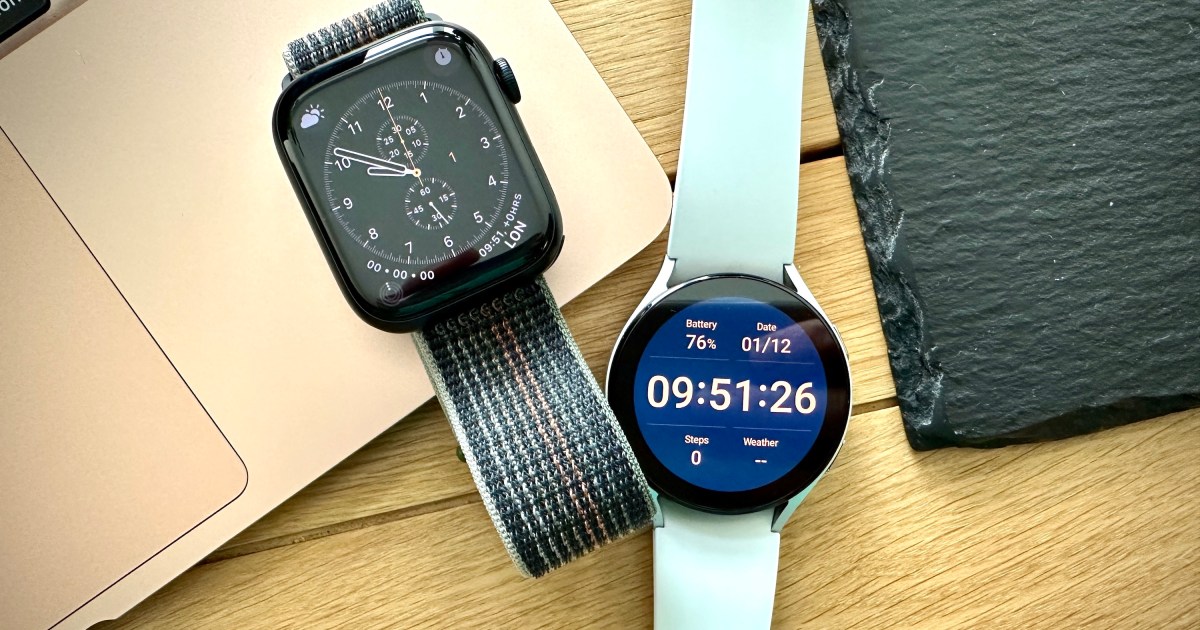

Andy Boxall / Digital Trends
The world of smartwatches gets more exciting each year as tech giants like Apple and Samsung compete to create more powerful wearables with leading-edge health features, while new contenders enter the game with their own unique takes on the category. The Apple Watch and Samsung Galaxy Watch are both class-leading devices that save lives, keep your health in check, and provide a handy way to stay on top of what’s going on in your life.
Of course, a smartwatch is more than a technology device; it’s also a fashion statement, and even the most sophisticated smartwatch technology is useless if you don’t want to wear it because it’s unattractive or unwieldy. That makes the decision on which one to pick a more personal one, and that’s why each manufacturer has its own distinctive style.
Thanks to the years of focused experience behind it, the Apple Watch Series 10 remains the best smartwatch out there, but of course you’ll have to own an iPhone (or be willing to switch) to use it. The good news is that Android fans have a wealth of other options to choose from. Now in its third iteration, Google’s Pixel Watch 3 has emerged as a top pick for most Android users; however, Samsung’s Galaxy Watch 7 is a major contender and a great option for Samsung fans as the latest entry in the company’s more mature smartwatch lineup boosts performance over its predecessor and continues its trend of providing a more holistic view of your health.
Those aren’t your only choices, though. Boutique brands like OnePlus offer Wear OS-powered smart watches that boast exceptional battery life and fast charging speeds, while Garmin continues to offer some of the best fitness-focused wearables, and even luxury brand Tag Heuer has entered the ring for those who don’t want to sacrifice premium fashion just to get smartwatch features. Here’s our rundown of the best smartwatches you can buy in 2024.

Joe Maring / Digital Trends
Apple Watch Series 10
The best smartwatch for the iPhone
Pros
- The thinner design is a big deal
- Jet Black looks phenomenal
- Subtle (but welcome) screen upgrades
- I love the new speaker
- Excellent health/fitness features
- Improved charging speeds
Cons
- No blood-oxygen tracking
- Sleep apnea is also on the Series 9
- Still just one-day battery life
Why you should buy this: It’s the best smartwatch available.
Who it’s for: Anyone who wants a beautifully made, feature-rich, easy-to-use smartwatch.
Why we picked the Apple Watch Series 10: The Apple Watch Series 10 continues to set the standard by which all other smartwatches are measured. This year’s model gets some small, but significant design changes over the Series 9, shaving off a millimeter of thickness and 2 to 4 grams of weight. That may not sound like a lot, but it adds up for a device you’re wearing on your wrist all day. The premium finish also moves from stainless steel to titanium for an even greater reduction in weight. It’s also available in a stunning new glossy Jet Black finish.
The screen size has grown by 2mm to 3mm in each direction, a subtle increase that’s enough to give you an extra line of text for notifications and apps like Mail and News. However, the bigger improvement is the LTPO3 wide-angle OLED display. While the overall maximum brightness remains at 2,000 nits, the new display technology makes better use of that brightness, promising 40% more when looked at from off-axis angles. That’s a noticeable benefit for a watch, since you’re rarely looking at it straight-on.
As usual, the Apple Watch Series 10 packs a full array of body sensors, and watchOS 11 adds sleep apnea notifications to the mix of health conditions that the Apple Watch can help you detec. Apple makes it clear that it’s still no substitute for a professional diagnosis, merely a cue to suggest it might be a good idea to see a doctor. Sadly, an ongoing patent battle in the U.S. has resulted in one of the key sensors being disabled this year; the blood oxygen sensor is still technically there, but it won’t work on any new Apple Watch purchased in the U.S. until the patent dispute is settled or the patents in question expire in 2028. Thankfully, the new sleep apnea feature doesn’t rely on this — it uses the accelerometer and some clever advanced machine learning algorithms instead. Plus, this will only be an issue if you’re buying your Apple Watch in the U.S.; it’s business as usual in other countries like Canada.
In addition to the usual heart rate, electrocardiogram, body temperature, and motion sensors, the Apple Watch also features fall and crash detection to notify emergency services in the event you’ve had an accident. Fall Detection has been around since the Series 4, and Crash Detection came to the Series 8, and both have proven themselves remarkably effective at saving lives, helping people get rescued even when unconscious.
While the S10 chip in the Apple Watch Series 10 appears to be little more than a repackaged version of the S9 chip, that’s not a problem as that was already the fastest smartwatch chip on the market by a healthy margin. It’s enabled features like Double Tap, which lets you dismiss alarms, answer calls, and even scroll through notifications and the Smart Stack just by double-tapping your index finger and thumb together. It also now processes Siri requests on-device, improving response time and privacy and letting you make queries and update health information with your voice.
There’s also no shortage of workouts for fitness buffs to track. The Series 10 brings over the depth gauge from the Apple Watch Ultra to support shallow-water activities. This included Depth app will activate automatically when submerged to give you water temperature and depth readings up to 6 meters (20 feet). It’s not rated for recreational scuba diving like the Ultra, but it’s a nice touch for folks that enjoy snorkeling or diving. The new Tides app in watchOS 11 also lets you check the current and forecasted conditions at any one of over 100,000 beaches worldwide so you can be prepared for your next watery adventure.
There’s ample battery life for a full day’s use, and even faster charging lets you top it up to 80% in 30 minutes, and to a full charge in about an hour. Most folks will be able to pop it on the charger while taking their morning shower and be ready to head out the door with a full charge, even after a full night of sleep tracking.
The Apple Watch Series 10 comes in two sizes, which have grown to 42mm and 46mm this year. However, as with past models, both remain compatible with the hundreds of bands that have been made for every model since the original 2015 Series 0. The standard aluminum model is available in both GPS (Wi-Fi only) and GPS + Cellular (LTE) versions, while all of the higher-end titanium versions include LTE support.

Apple Watch Series 10
The best smartwatch for the iPhone

Andy Boxall / Digital Trends
Google Pixel Watch 3
The best smartwatch for Android
Pros
- It finally comes in a bigger size!
- Gorgeous, well-made hardware
- Smaller bezels, more display
- Well over 24-hour battery life
- Excellent running features
- Robust health tracking
- Reliable and easy-to-use software
Cons
- Underside scratches easily
- Some Fitbit features require a subscription
Why you should buy this: It’s simply the most well-rounded Wear OS smartwatch on the market.
Who it’s for: Android phone owners who want the best smartwatch available.
Why we picked the Google Pixel Watch 3: Google may have come late to the smartwatch game, but it’s made up for lost time pretty quickly. After a weak initial start, Google quickly refined its designs and technology, leading to this year’s Google Pixel Watch 3 joiningthe cream of the crop of Android smartwatches.
The Google Pixel Watch 3 is as close to a “Goldilocks” smartwatch as any we’ve seen. It combines a solid build with an attractive design, an excellent display, strong battery life, and sophisticated health and fitness features — and it does it all at a remarkably affordable price. It’s what we hoped the original Pixel Watch would be, and we’re thrilled to see that it’s only taken Google three iterations to hit that sweet spot.
The Pixel Watch 3 has finally grown up in more ways than one. The first two generations were limited to a smaller 41mm size, which left many folks giving it a pass as it was less readable than most of its competitors and looked awkwardly toylike on larger wrists. This year’s model finally adds a 45mm body to the mix. The design remains unchanged otherwise, but it’s remarkably minimalist. Google has gone for a tech-forward look similar to the Apple Watch, but with a round design that’s all its own. It’s not for everyone, but we think the more modern aesthetic is sleek and subtle. It’s also more durable than it looks, thanks to Gorilla Glass 5 on the display and the same IP68 and 5ATM ratings of its flagship competitors.
The display also gets reduced bezels, which, when combined with the 45mm screen, lets you see a lot more information at a glance. Google has improved the brightness to the 2,000-nit level that we’ve come to expect on a modern smartwatch, so you’ll have no problem seeing it outdoors on even the sunniest days, yet it also drops to a single nit so you won’t be blinded when you need to check the time in the middle of the night.
When it comes to health and fitness, the Pixel Watch 3 retains its identity as a glorified Fitbit, but in this case, we’d say you’re selling it short if you see it as nothing more than that. It still uses the Fitbit app, so you have to be comfortable with the way it tracks data like steps and floors, but Google has taken things to a new level with powerful new Cardio Load and Readiness health metrics that should deliver deeper insights into your health and fitness. On the surface, these translate into simple numerical ratings to help you easily know where you stand — Cardio Load for workout intensity and Readiness for your general health — and how ready you are to face the day based on factors like heart rate and sleep. We found both those scores to be remarkably accurate, lining up with similar metrics we get from other smartwatches and even smart rings like the Oura Ring.
Runners will also appreciate a new set of features, such as alerts for intervals, splits and real-time coaching based on your goals, and AI-powered running recommendations. While Google’s suite of running features doesn’t necessarily exceed what Apple and Samsung offer, they’re well-thought-out and put the Pixel Watch 3 on par with its competitors. The only catch? You’ll still need a Fitbit Premium subscription to get the most out of these, as most of the AI-powered recommendations and things like detailed sleep tracking are locked behind that paywall. Basic health and fitness tracking is still free, and the $10 monthly or $80 annual price tag isn’t too bad, but it’s still disappointing that Google feels the need to charge for features that its biggest rivals include in the purchase price.
The Pixel Watch 3 gets excellent battery life that exceeds its manufacturer’s claims. Google promises 24 hours on a single charge, but in our experience, it lands closer to 36 hours of normal use. The Pixel Watch 3 appears to have borrowed a page from OnePlus here with a hybrid approach that uses a Cortex M33 coprocessor to take the load off the more power-hungry Snapdragon W5 chip for routine background tasks, making much better use of the battery. It also has fast charging, getting back up to 100% in about an hour.
The Pixel Watch 3 isn’t just for Google Pixel users; it’s the best smartwatch for most folks no matter which Android phone you’re using. You won’t find a better smartwatch without switching to an iPhone. While other smartwatches may serve those with more specific needs, the Pixel Watch 3 is the best of all worlds, checking every box to create an incredibly well-rounded package that won’t disappoint.

Google Pixel Watch 3
The best smartwatch for Android
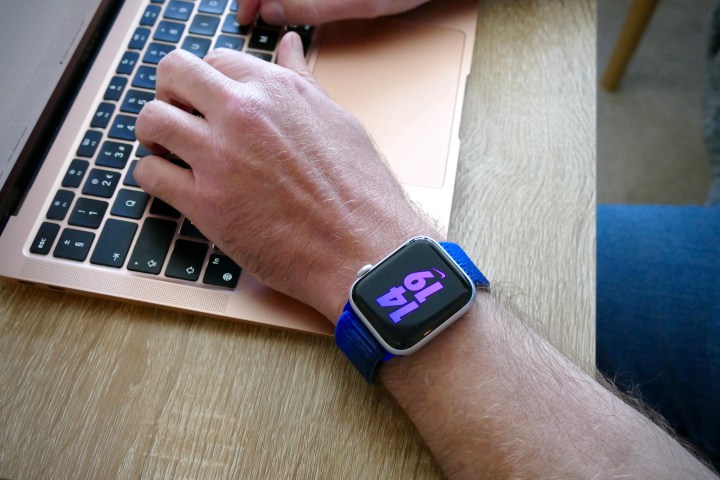
Andy Boxall / Digital Trends
Apple Watch SE 2
The best budget smartwatch for the iPhone
Pros
- Comfortable to wear 24 hours a day
- Comprehensive, yet simple-to-use fitness tracking
- Excellent smartwatch software and support
- Latest processor provides all the power needed
- Two-day battery
Cons
- No always-on screen
- Slow battery charging
Why you should buy this: It’s almost the Apple Watch Series 8, but for less money.
Who it’s for: Anyone who doesn’t mind not having an always-on screen on their smartwatch.
Why we picked the Apple Watch SE 2: Do not make the mistake of underestimating the Apple Watch SE 2. It has the vast majority of features found on the old Apple Watch Series 8, the same S8 processor, and it operates on the latest watchOS software with the W3 wireless chip for a flawless connection to your iPhone. But it will cost you less than the newer models of the Apple Watch.
The big functional difference between the newer Apple Watch models is the Watch SE 2 does not have an always-on screen. It means the SE 2’s screen is black until you raise your wrist, while the screens on newer models always show the watch face and time. Other differences include the nylon composite case back, the sensor array from the original Watch SE (so it doesn’t track blood oxygen levels or take an ECG), and slower charging.
But what you do get is everything else. The wonderful easy-to-use software, the extensive health and fitness tracking, fall and noise detection, crash detection, the usual notifications, plus all the customization using different bands. It comes in two sizes, 40mm or 44mm, and several color options. The health tracking features it misses out on won’t affect everyone, and if you can live without the always-on screen, the Apple Watch SE 2 will serve you just as well as the Series 10.

Apple Watch SE 2
The best budget smartwatch for the iPhone

Tushar Mehta / Digital Trends
OnePlus Watch 2R
The best budget smartwatch for Android
Pros
- Rugged, durable design
- Easily replaceable watch bands
- Fluid interface with Wear OS
- Exceptional battery life and charging
- No features locked to OnePlus phones
Cons
- Average looks
- Unimpressive health features
- No backup and restore via cloud
Why you should buy this: It’s a very affordable smartwatch that delivers good bang for your buck and incredible battery life.
Who it’s for: Anyone who wants a Wear OS smartwatch that can run for days between charges.
Why we picked the OnePlus Watch 2R: OnePlus has been on a roll lately when it comes to its more affordable “R” series products, and the Watch 2R is no exception. The OnePlus 12R is possibly the best value Android smartphone out there, and OnePlus’ budget smartwatch follows in its footsteps while continuing to excel in the area that OnePlus is best known for: exceptionally fast charging and long battery life.
Like most Wear OS smartwatches, the OnePlus Watch 12R can pair with any Android smartphone that meets the minimum requirements — which are a pretty low bar at Android 8.0 or later. However, it’s unique in that you don’t get any special advantages at all to using it with a OnePlus phone; it works just as well with a Google Pixel 9 or Samsung Galaxy S24 FE.
That’s arguably because it doesn’t offer all the sophisticated features of more advanced smartwatches, but we think what it does provide is perfectly reasonable for its $230 asking price. You’re getting the same Snapdragon W5 Gen 1 chip as its more expensive sibling, the OnePlus Watch 2, which means the performance is snappy and lag-free. OnePlus has also baked in the proprietary RTOS operating system of its earlier smartwatches to provide a low-power mode that sips battery. You’ll lose Wear OS functionality and most health-tracking features will stop, but it can extend your battery for nearly two weeks between charges.
However, you don’t need to fall back on the low-power mode to get great battery life. We had to charge it once during the five days that we reviewed it, which is a runtime that most competing smart watches can only dream of. You’ll also be able to fully charge it up in under an hour, and the charging puck is unique in offering a detachable USB-C cable, making it easier to travel with.
So, what’s the biggest downside to this budget smartwatch? You won’t get the robust health-tracking features of more premium models. There’s a generous assortment of workouts, with basic stats like heart rate, distance, calories burned, and VO2 max, plus blood oxygen sensing and sleep tracking. However, you don’t get an electrocardiogram sensor, skin temperature sensor, or more sophisticated body composition analysis features. Our testing has also left us with concerns about OnePlus’ dubious accuracy compared to other smartwatches. None of those are deal-breakers for a $230 smartwatch as long as you’re going into it with your eyes open.
These drawbacks are also largely irrelevant if health features aren’t your priority. The OnePlus Watch 2R provides excellent battery life, solid performance, plenty of onboard storage, and an enjoyable Wear OS experience that makes it an ideal pick for someone who primarily wants a smartwatch for basic workout tracking and more traditional features like notifications, customizable watch faces, apps, and music.

OnePlus Watch 2R
The best budget smartwatch for Android
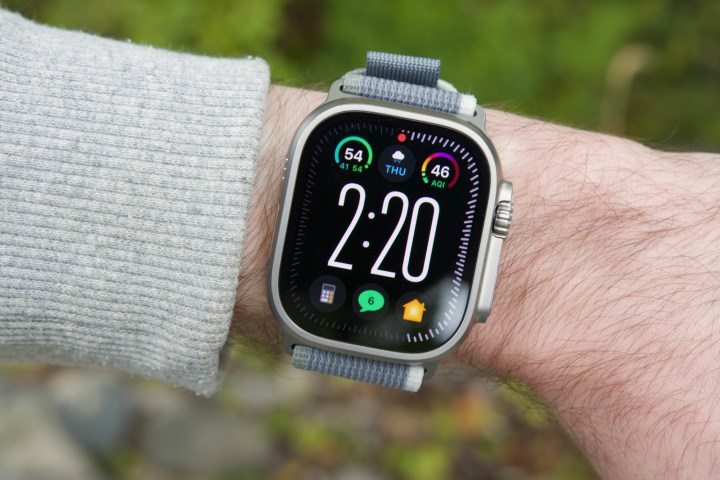
Joe Maring / Digital Trends
Apple Watch Ultra 2
The best premium smartwatch for the iPhone
Pros
- Titanium design is still gorgeous
- Stunning, super bright display
- Unmatched performance
- Siri is better than ever
- Twice as much storage
- Excellent battery life
- WatchOS 10 is fantastic
Cons
- Double Tap is underutilized
- Virtually identical to last year’s model
Why you should buy this: It’s the ultimate smartwatch for the iPhone, and astonishingly capable too.
Who it’s for: Adventurers, divers, hikers, runners, and anyone who wants a no-compromise, statement-making smartwatch on their wrist.
Why we picked the Apple Watch Ultra 2: Apple may promote the Apple Watch Ultra 2 as an adventure smartwatch, suitable mostly for those who enjoy all kinds of outdoor pursuits. But if that’s not you, don’t ignore this superb smartwatch. It does everything the Apple Watch Series 9 does, with a 49mm titanium case, sapphire crystal over the screen, ceramic on the case back, and a battery that can last multiple days on a single charge. It’s big, tough, and bold, but also supremely capable. While Apple skipped a significant update for the Ultra in 2024, it did add a sleek new dark titanium finish that looks gorgeous and should appeal for folks who weren’t fans of the more natural metallic look.
Like the Apple Watch Series 9, the Apple Watch Ultra 2 has the S9 chip, which allows for on-device Siri processing, with no data connection required. It also has the new Double Tap gesture, allowing you to perform certain actions on the watch using your index finger and thumb, offers Precision Finding with the iPhone 15 and iPhone 16, and supports the latest new watchOS 11 features like Double Tap improvements and sleep apnea notifications.
What does it do beyond the Series 10? The screen is bigger and brighter (it reaches up to 3,000 nits peak brightness), there’s the customizable orange Action button on the side of the case, LTE comes as standard, it has an emergency alert siren to attract attention, and it’s suitable for dive use. The Low Power battery mode extends use to more than 60 hours, the case meets MIL-STD-810H standards and is IPX8 dust resistant, and the watch has a 100-meter water resistance too. It comes with your choice of unique Ultra band, designed to suit your activity of choice, but works with any Apple Watch strap too. Plus, don’t let the Series 10’s new S10 chip fool you, as it’s basically just a repackaged version of the S9, which means you’ll get the same performance.
The biggest catch with the Apple Watch Ultra 2 for buyers in the U.S. is that you’ll no longer get the blood oxygen sensor. In January, Apple was forced to disable it due to an ongoing patent dispute, and there’s no sign that will be resolved anytime soon. This doesn’t affect anyone who bought an Apple Watch Ultra 2 last year, before the ban took effect, and it also doesn’t apply to models sold in Canada and other countries, but if you buy a new Apple Watch Ultra 2 in the U.S., you’ll be missing that feature.
Nevertheless, all the other features are well-thought-out, right down to the design and choice of materials, and while it’s still twice the price of the Series 10 and has otherwise very similar functionality, there’s something unique about the Ultra 2. It has some character to it, and that’s rare to find in a smartwatch. Most people will be fine owning the Series 10, which is more wearable overnight, but if you’re tempted by the Ultra and think you’d make use of its adventurous credentials, we say go for it. You won’t be disappointed by this very special smartwatch.

Apple Watch Ultra 2
The best premium smartwatch for the iPhone

Andy Boxall / Digital Trends
Samsung Galaxy Watch 7
Best smartwatch for Samsung phones
Pros
- Attractive, enduring design
- Choice of size, color, and band
- Fast processor
- Bright, clear screen
- All the durability you need
Cons
- One-day battery life
- Slow charging
- Some features require a Samsung phone
Why you should buy this: Fast performance, Wear OS 5, and sophisticated health features make this one of the best smartwatches on the market, especially for Samsung users.
Who it’s for: Anyone who wants a proven design with some of the most comprehensive health features available on a smartwatch today.
Why we picked the Samsung Galaxy Watch 7: While the Galaxy Watch 7 may look the same as last year’s Galaxy Watch 6 on the outside, Samsung has made some impressive changes under the hood to beef up performance and bring its staple health-tracking feature to new heights.
First up, it gets a new 3nm Exynos W1000 processor that delivers true, lag-free performance and ensures that notifications come through without hesitation. Navigation is buttery smooth, and apps open almost instantly. It’s a threefold boost in performance over the Exynos W930 used in the Galaxy Watch 6, and it makes a noticeable difference.
Samsung has used that extra horsepower to make the Galaxy Watch 7 the first smartwatch to introduce sleep apnea monitoring, beating Apple to the punch by about two months. As Samsung explains, this allows the latest Galaxy Watch models to “detect signs of moderate to severe obstructive sleep apnea over a two-night monitoring period.” As with Apple’s implementation, it’s no substitute for a professional medical diagnosis, but it’s a good way of alerting users to a potential condition that goes undetected in many people.
Beyond that, Samsung offers the stable of health and fitness features that its smartwatches are known for, including an improved BioActive Sensor that should deliver even more accurate readings for metrics like heart rate, muscle and fat mass, body water, body fat, and basal metabolic rate (BMR). And its bioelectrical impedance analysis (BIA) provides a more comprehensive profile of your body composition, such as fat and muscle mass. The result is a more holistic view of your health than many other smartwatch platforms offer.
Along those same lines, Samsung has brought Galaxy AI into the mix to analyze your sleep, activity, heart rate, and more to deliver a new Energy Score metric that gives you greater insight into your health and offers recommendations and coaching on how to improve it.
Perhaps unsurprisingly, the Galaxy Watch 7 is the best smartwatch to buy if you have a Samsung smartphone. It’s a brilliant smartwatch that sticks with an established and proven design and ramps things up significantly under the hood with new levels of performance and an even stronger focus on providing a deeper and more comprehensive view of your health. The only marks against it are that you’ll need a Samsung smartphone to get the most from it, and the battery life isn’t as impressive as we’d hoped. However, that last part just means you’ll have to charge it at least once a day, but we think that trade-off is worth it given everything else the Galaxy Watch 7 offers.

Samsung Galaxy Watch 7
Best smartwatch for Samsung phones
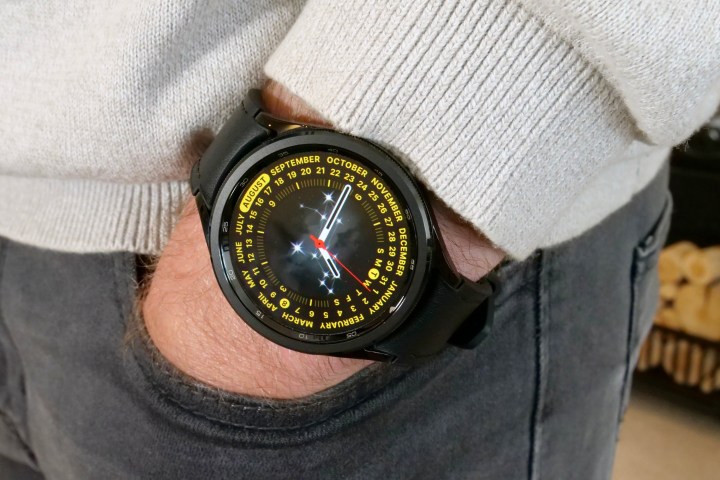
Andy Boxall / Digital Trends
Samsung Galaxy Watch 6 Classic
The best premium smartwatch for Android
Pros
- Rotating bezel
- A choice of case size
- Supreme 24/7 comfort
- High quality materials
- Comprehensive health and fitness tracking
Cons
- Spotty notification reliability
- Performance doesn’t always impress
Why you should buy this: It’s incredibly comfortable, looks great, and is made from high-quality materials.
Who it’s for: An Android user who wants a premium smartwatch with a unique design and has no problem paying more to get it.
Why we picked the Samsung Galaxy Watch 6 Classic: The Samsung Galaxy Watch 6 Classic was released as a more expensive companion to the Galaxy Watch 6, and it still fills that spot, even alongside this year’s more powerful Galaxy Watch 7.
While this year’s Galaxy Watch Ultra is another option if you’re willing to spend even more, that design isn’t for everyone. The Galaxy Watch 6 Classic is the better option for those who want a Samsung smartwatch with a more sophisticated style.
Plus, even though the Galaxy Watch 6 Classic may seem like it’s now a year behind, it’s expected to get Wear OS 5 any day now, which should put it on par with the Galaxy Watch 7 in terms of software features.
What makes the Galaxy Watch 6 Classic remain a worthwhile buy is its elegant design that looks as close to a classic watch design as you’ll find among flagship smartwatches. From the classy stainless steel case and sapphire crystal glass display to the rotating bezel and leather strap, it’s as much a fashion statement as a smartwatch. Plus, WearOS 5 has arrived, which means you can access a much broader range of attractive watch faces to complement its style.
Don’t let its looks fool you, though, as it doesn’t pull any punches on features. You get solid battery life that actually beats out this year’s Galaxy Watch 7, plus all of Samsung’s great health- and fitness-tracking features, from the BioActive Sensor that tracks your heart rate, body temperature, and blood oxygen levels to the bioelectrical impedance analysis that will give you insights into your body composition.
The Galaxy Watch 6 Classic is the smartwatch to buy if you want the Samsung health and Wear OS experience in style. With a gorgeous high-quality build, a rotating bezel, and a much larger screen, it’s one of the best premium smartwatches for Android phones.

Samsung Galaxy Watch 6 Classic
The best premium smartwatch for Android

Andy Boxall / Digital Trends
Mobvoi TicWatch Pro 5
The best dual-screen smartwatch
Pros
- Clever dual-screen system
- Four-day battery life
- Highest-performance smartwatch
- Clean and reliable software
- Quality haptic feedback
Cons
- One size and color only
- No cellular option
- Fitness-tracking bug requires fixing
Why you should buy this: The latest chip, four-day battery life, and slick software make this a truly excellent smartwatch.
Who it’s for: Anyone who wants the best dual-screen tech and the longest battery life from their smartwatch.
Why we picked the Mobvoi TicWatch Pro 5: The Mobvoi TicWatch Pro 5 is going to cost you $350, but it’s worth the additional cost over what you’d spend on the basic $300 Samsung Galaxy Watch 6 if you want a dual-screen watch with great battery life. It’s one of the fastest, smoothest-performing Android smartwatches we’ve used, and it returns battery life most others cannot come close to matching.
Mobvoi’s clever dual-screen layout is the star here. In this clever feature, a standard OLED screen is overlaid by a different panel used solely for always-on duties. It’s more useful than on previous TicWatch models, showing additional information outside of just the time and date, and it’s instrumental in making the battery last as long as it does. It requires no effort to use, but is hugely beneficial.
Inside the TicWatch Pro 5 is the Qualcomm Snapdragon W5+ Gen 1 processor. It’s the first smartwatch to feature the chip, and it’s a seriously impressive performer. Wear OS 3.5 is very fast and super smooth, banishing the memory of so many poor-performing Android smartwatches from the past. It’s seemingly efficient, too — when paired with the dual-screen layout, the TicWatch Pro 5’s battery lasts for around four days before it needs recharging.
To get this truly premium smartwatch experience, you’ll have to put up with the TicWatch Pro 5’s size. It has a 46mm case, and that’s the only size available. The design is slick, but it only comes in black and on a silicone strap, so there’s not much room for personalization here. It is durable, though, with MIL-STD-810G toughness and water resistance.
The Mobvoi TicWatch Pro 5 is a technical powerhouse. It shows off Wear OS better than any other smartwatch, and it has battery life that makes other models blush. If you value materials like sapphire crystal on your premium smartwatch over power and specs, then take a look at the Samsung Galaxy Watch 6 Classic instead.

Mobvoi TicWatch Pro 5
The best dual-screen smartwatch

Andy Boxall / Digital Trends
Withings ScanWatch 2
The best hybrid smartwatch
Pros
- Beautiful design
- Comprehensive health monitoring
- FDA approved for atrial fibrillation
- 38mm or 42mm case sizes
- Long battery life
Cons
- Unreliable notifications
- Subscription needed to unlock features
- App design can frustrate
Why you should buy this: It’s the ideal mix of good watch design and fitness-tracking technology.
Who it’s for: Anyone who doesn’t want their smartwatch to look too techy, but isn’t willing to compromise on health and fitness tracking.
Why we picked the Withings ScanWatch 2: A hybrid smartwatch is one that looks more like a traditional watch with analog hands and no touchscreen, but still includes all the smart connected features and health tracking we love about more techy models. The Withings ScanWatch 2 fits the bill perfectly, with its classy stainless steel case and sapphire crystal, plus an almost hidden OLED screen showing all the information you need.
On the back is a heart rate sensor and body temperature monitor, plus the ScanWatch 2 separates itself from other smartwatches by having Food and Drug Administration (FDA) approval for its atrial fibrillation detection. It also tracks your workouts, measures blood oxygen levels and body temperature during exercise, and a lot more. It’s also an excellent sleep tracker, with masses of data available.
The lack of a touchscreen means the battery has less work to do, and should last for about two weeks on a single charge when you use all the features (or longer if some are inactive). The app is informative, but not all that well laid out, and there are a lot of niche features — plus an unwelcome subscription to pay if you want more. Otherwise, the ScanWatch 2 is a superb choice if a full touchscreen smartwatch doesn’t appeal to you.
Alternatively, if the design isn’t sporty enough, the Garmin Vivomove Trend may be more suitable, and we love its cool looks and hidden screen, along with Garmin’s excellent health and fitness platform. Failing that, Casio’s connected G-Shock watches like the GPR-H1000 Rangeman and the GBD-H2000 are both excellent too.

Withings ScanWatch 2
The best hybrid smartwatch
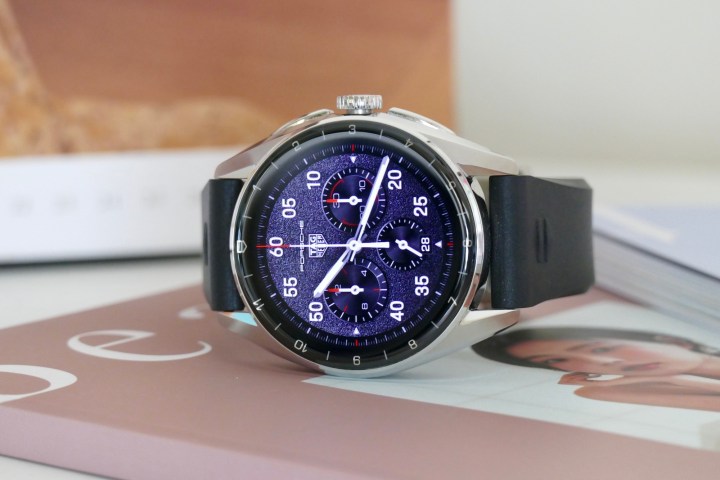
Andy Boxall/Digital Trends
Tag Heuer Connected Calibre E4
The best luxury smartwatch
Pros
- Tag Heuer Sports app is excellent
- Luxury sapphire, ceramic, and steel build
- Sharp, high-resolution screen
- 42mm size suitable for most people
Cons
- No Sp02 sensor
- Can’t take calls
Why you should buy this: It’s the definitive smartwatch made by a luxury watchmaker.
Who it’s for: If you appreciate a luxury watchmaker’s approach to design and wearability, the Connected Calibre range is for you.
Why we picked the Tag Heuer Connected Calibre E4: There are two different Connected Calibre E4 models, one with a 42mm case and the other with a 45mm case. We recommend the 42mm case overall, as it’s going to suit more wrist sizes, but if you’re happy wearing a bigger watch, the 45mm Connected Calibre E4 has a slightly different design that may appeal more. Tag Heuer has also released various special editions, including a golf-specific model and one in collaboration with Porsche.
But why buy a luxury smartwatch? It’s all about the design, materials, and strap. The Connected Calibre E4 is made from stainless steel and has a ceramic bezel, and comes with either a steel, rubber, or leather strap equipped with Tag Heuer’s excellent folding clasp. The pushers feel almost mechanical, the crown rotates, and the design is elegant and classy. It’s a world apart from tech-forward smartwatch designs.
On the back is a heart rate sensor so it’ll track all your workouts, the watch receives notifications from your phone, and it is compatible with both Android and iOS. It comes with Google’s Wear OS software, and the good news is an update to Wear OS 3 should be available as you read this, bringing the smartwatch right up to date. It also keeps it competitive, as the Montblanc Summit 3 had Wear OS 3 installed at launch. The Montblanc smartwatch is a good alternative if you don’t like the Tag Heuer design or its watch face options.
Any luxury watch must make you feel special when you wear it, and the Tag Heuer Connected Calibre E4 manages to bring that special something into the world of smartwatches.

Tag Heuer Connected Calibre E4
The best luxury smartwatch
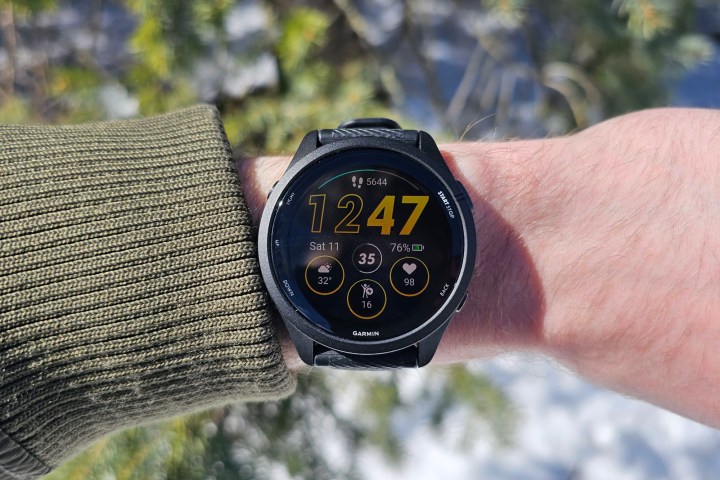
Joe Maring / Digital Trends
Garmin Forerunner 265
The best fitness smartwatch
Pros
- Extremely comfortable
- Lovely AMOLED screen
- Incredible health/fitness tools
- Highly customizable
- 4-plus days of battery life
- Doesn’t require any subscriptions
Cons
- Limited smart features
- Proprietary charger
Why you should buy this: You get all Garmin’s fitness expertise and features in a neat smartwatch with a touchscreen.
Who it’s for: It’s best for runners and sports addicts, but can also prove motivational for anyone wanting to improve their fitness.
Why we picked the Garmin Forerunner 265: Garmin’s Forerunner series, as the name suggests, targets runners — and the 265 model sits in the middle of the options available. But just because it’s most suited to running, don’t think that it can’t do anything else, because this is a fully featured fitness wearable that will keep most fitness addicts motivated and satisfied.
The 46mm case and 47 gram weight mean it’ll look and feel sizable on your wrist compared to the Apple Watch Series 8 or the Galaxy Watch 5, but the 22mm band has lots of adjustment or can be quickly swapped for another one if you want to jazz up the rather plain look. Data is presented on a high-resolution AMOLED touchscreen, and there are buttons on the case to make it easy to navigate on the move or when wearing gloves.
It has a full sensor array to monitor heart rate and blood oxygen levels, plus Garmin’s platform provides masses of additional data on your workouts, lifestyle, and sleep. It returns plenty of motivation too and can help you improve your fitness and try different plans to keep things interesting. The battery lasts for between four and seven days, depending on your use, and it recharges in around an hour.
If the Garmin Forerunner 265’s high price and chunky design puts you off, then we recommend checking out the slightly cheaper and more stylish, but equally capable, Polar Pacer Pro instead.

Garmin Forerunner 265
The best fitness smartwatch
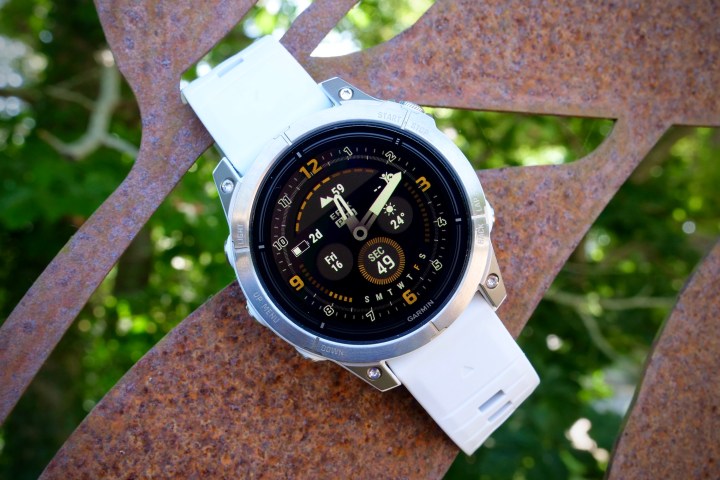
Andy Boxall / Digital Trends
Garmin Epix Pro (Gen 2)
The best smartwatch for outdoor sports
Pros
- High quality materials
- Durable construction
- Hugely customizable
- Comprehensive sporting platform
- No subscription needed
Cons
- No Qi wireless charging
- Operating system takes some learning
Why you should buy this: It’s the best smartwatch for outdoor enthusiasts and the seriously sporty.
Who it’s for: This watch is for anyone serious about their sport.
Why we picked the Garmin Epix Pro (Gen 2): If you’re a hiker, cyclist, runner, or adventurer, then you’ll want a smartwatch that can keep up, and probably one that’s both durable and customizable too. The Garmin Epix Pro (Gen 2) is just about the most feature-rich sports smartwatch you can get, as it’s filled with focused features and linked to the in-depth Garmin health platform.
There are several versions of the Epix Pro (Gen 2) to choose from, including massive 51mm versions with a sapphire crystal. And when you get it, the entire look of the software on-screen can be tailored to match your sport of choice. It’s very focused, and expects you to be focused too.
The battery can last up to a week. There’s GPS, a compass, altimeter, thermometer, a heart rate and blood oxygen sensor, and even a tiny flashlight built in. The Epix Pro (Gen 2) has new metrics for endurance and hill climbing, and even more internal storage space compared to the old model. There’s a steep learning curve attached to the software, and you really have to be dedicated to a particular sport to get the most from it, but the Epix Pro (Gen 2) is an incredibly feature-packed smartwatch.

Garmin Epix Pro (Gen 2)
The best smartwatch for outdoor sports
Frequently Asked Questions
Which smartwatch works with my smartphone?
Although it sounds like a complicated question, this is surprisingly straightforward. If you own an Android phone, then you can use any smartwatch with Google’s Wear OS software. You can also use most smartwatches from companies like Withings, Huawei, Amazfit, and others. The only one you can’t use is the Apple Watch.
If you own an iPhone, you can use the Apple Watch (obviously) and most other smartwatches too, provided they have a compatible app. Wear OS watches used to be compatible with iPhones, but more models from the Galaxy Watch 5 and Galaxy Watch 5 Pro are not.
What’s Wear OS?
Google and Samsung teamed up to create a software operating system for wearables called Wear OS 3. The joint project incorporates both the Wear OS and Tizen platforms, along with fitness expertise from Fitbit. The first smartwatches with the software were the Galaxy Watch 4 and Galaxy Watch 4 Classic, but now there are more, especially newer Samsung models like the Samsung Galaxy Watch 7 and the Samsung Galaxy Watch Ultra.
How durable is a smartwatch?
Because it’s on your wrist, smartwatches are exposed to danger. They’re easy to knock against things and can often get wet. Does this mean you must be extra careful with your watch? Many have an IP68 water resistance rating today, and some smartwatches meet military standards for toughness and will withstand harsher treatment than others. If you want to make sure you can wear your chosen device in the shower or to go swimming, then you need to think about smartwatch water resistance and look for an IP or ATM rating.
Do I need a smartwatch with GPS?
If you are a runner and intend to use your smartwatch to track routes, and you don’t want to run with your phone, then yes, you do need GPS. Most modern smartwatches come with GPS as standard anyway, so you may find it’s ready and waiting if you need it. If your smartwatch doesn’t have GPS, then some can use your phone’s GPS when connected, but it will be slower to operate. One thing to remember is that using GPS will drain the battery in the watch faster than usual. If you’re really concerned about GPS accuracy, consider getting the Apple Watch Ultra or the Garmin Forerunner 955 Solar.
Can my smartwatch use my data plan?
If your smartwatch connects to your smartphone using Bluetooth, then all the data it requires comes from your phone at no extra charge to you. This changes if you buy a smartwatch with 4G LTE, like the LTE version of the Apple Watch. When a smartwatch has its own data connection, it can be used on its own without being connected to your smartphone, ready to make calls, receive messages, and plenty more. However, you will have to pay extra for the privilege. The amount varies depending on your carrier and current plan, but expect to pay around $10 per month to enable the 4G LTE connection on your smartwatch.
Will a new smartwatch work with my older phone?
If your Android phone or iPhone was purchased in the last three or four years, then the answer is almost certainly yes. For some context, the Galaxy Watch 6 and Watch 6 Classic work with any Android phone running Android 8.0 or later. The Apple Watch Series 9 and Watch Ultra 2 are compatible with iPhones running iOS 16 — meaning any models from the iPhone 8 and newer.
Which smartwatch OS is best?
Each smartwatch operating system is different, which is to say that one operating system isn’t objectively better than the other. Instead, the “best” OS is the one that’s compatible with your smartphone. If you have an Android device, a watch running Wear OS is most likely the best choice. It’s relatively easy to use, has a decent selection of apps, and has a robust feature set. If you have an iPhone — and this comes as no surprise — you should get an Apple Watch.
Should you buy a smartwatch?
So, you think you want a smartwatch? Are you sure? After all, unlike a smartphone, no one really needs a smartwatch.
However, because manufacturers are finally coming around to the realization that a smartwatch needs to look good, they’re a lot more tempting than they once were. One-day battery life and a touchscreen on a watch are still hard to swallow for some people, but that’s why hybrid smartwatches were invented — and battery performance and control methods are constantly getting better.
If you’re not ready to commit to a touchscreen smartwatch but still want to try out some smart features, the huge choice of hybrid watches has got you covered. They often cost half of what you’ll pay for the cheapest Apple Watch, link with any smartphone, and provide traditional watch looks matched with a connected smart experience.
Technology
The EU is looking into Corning for alleged anti-competitive practices
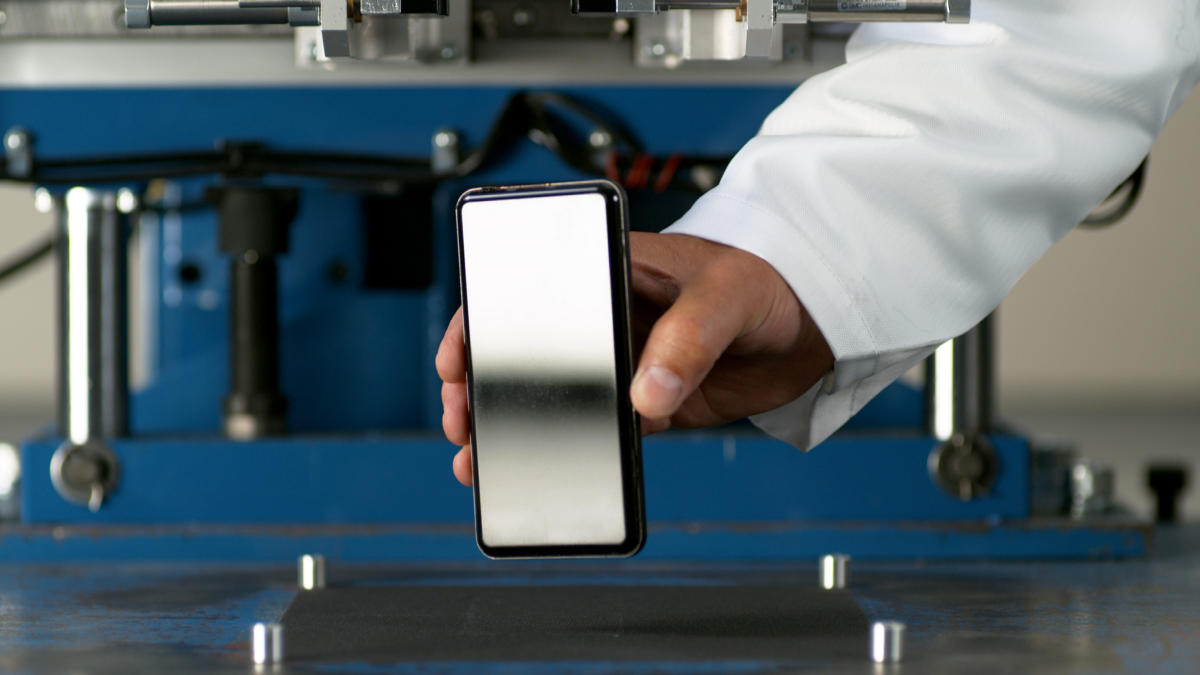
US-based glass manufacturer is the company behind Gorilla Glass, a break-resistant glass used to protect screens that’s used on essentially all of the most popular smartphones. Today, the European Commission Corning for anti-competitive practices, alleging that the glassmaker is preventing competition through exclusive supply agreements.
According to the press release, Corning requires mobile phone manufacturers to source all or nearly all of their alkali-AS glass from it, and it also grants rebates to these companies if they do so. Additionally, these phone makers must tell Corning if they receive competitive offers from other glass manufacturers. They aren’t allowed to accept these offers unless Corning cannot match or beat the price.
Similarly, Corning has agreements with companies that process raw glass, forcing them to get all or most of their alkali-AS glass from Corning. They also aren’t allowed to challenge Corning patents.
These charges reinforce how aggressive Corning is in defending its dominant position in the smartphone glass screen market. The latest Apple and Android devices, like the , usually have Gorilla Glass screens, as they’re scratch-resistant and prevent cracking or breaking. While not indestructible, the glass does hold up well against damage. However, Corning’s market dominance coupled with these practices are enough to get the EU’s attention.
Technology
AIRIS is a learning AI teaching itself how to play Minecraft

Join our daily and weekly newsletters for the latest updates and exclusive content on industry-leading AI coverage. Learn More
A new learning AI has been left to its own devices within an instance of Minecraft as the artificial intelligence learns how to play the game through doing, says AI development company SingularityNET and the Artificial Superintelligence Alliance (ASI Alliance). The AI, named AIRIS (Autonomous Intelligent Reinforcement Inferred Symbolism), is essentially starting from nothing inside Minecraft to learn how to play the game using nothing but the game’s feedback loop to teach it.
AI has been set loose to learn a game before, but often in more linear 2D spaces. With Minecraft, AIRIS can enter a more complex 3D world and slowly start navigating and exploring to see what it can do and, more importantly, whether the AI can understand game design goals without necessarily being told them. How does it react to changes in the environment? Can it figure out different paths to the same place? Can it play the game with anything resembling the creativity that human players employ in Minecraft?
VentureBeat reached out to SingularityNET and ASI Alliance to ask why they chose Minecraft specifically.
“Early versions of AIRIS were tested in simple 2D grid world puzzle game environments,” a representative from the company replied. “We needed to test the system in a 3D environment that was more complex and open ended. Minecraft fits that description nicely, is a very popular game, and has all of the technical requirements needed to plug an AI into it. Minecraft is also already used as a Reinforcement Learning benchmark. That will allow us to directly compare the results of AIRIS to existing algorithms.”
They also provided a more in-depth explanation of how it works.
“The agent is given two types of input from the environment and a list of actions that it can perform. The first type of input is a 5 x 5 x 5 3D grid of the block names that surround the agent. That’s how the agent “sees” the world. The second type of input is the current coordinates of the agent in the world. That gives us the option to give the agent a location that we want it to reach. The list of actions in this first version are to move or jump in one 8 directions (the four cardinal directions and diagonally) for a total of 16 actions. Future versions will have many more actions as we expand the agent’s capabilities to include mining, placing blocks, collecting resources, fighting mobs, and crafting.
“The agent begins in ‘Free Roam’”’ mode and seeks to explore the world around it. Building an internal map of where it has been that can be viewed with the included visualization tool. It learns how to navigate the world and as it encounters obstacles like trees, mountains, caves, etc. it learns and adapts to them. For example, if it falls into a deep cave, it will explore its way out. Its goal is to fill in any empty space in its internal map. So it seeks out ways to get to places it hasn’t yet seen.
“If we give the agent a set of coordinates, it will stop freely exploring and navigate its way to wherever we want it to go. Exploring its way through areas that it has never seen. That could be on top of a mountain, deep in a cave, or in the middle of an ocean. Once it reaches its destination, we can give it another set of coordinates or return it to free roam to explore from there.
“The free exploration and ability to navigate through unknown areas is what sets AIRIS apart from traditional Reinforcement Learning. These are tasks that RL is not capable of doing regardless of how many millions of training episodes or how much compute you give it.”
For game development, a successful use-case for AIRIS may include automatic bug and stress tests for software. A hypothetical AIRIS that can run across the entirety of Fallout 4 could create bug reports when interacting with NPCs or enemies, for example. While quality assurance testers would still need to check what the AI has documented, it would speed along a laborious and otherwise frustrating process for development.
Moreover, it is the first step in a virtual world for self-directed learning for AI in complex, omni-directional worlds. That should be exciting for AI enthusiasts as a whole.
Source link
Technology
MoradaUno wants to make it easier to rent apartments in Mexico

Renting in Latin America is restrictive. Most landlords require three months of rent as a deposit and a guarantor that owns property in the same city to co-sign the lease. Santiago Morales, the co-founder and CEO of proptech MoradaUno, said this dynamic makes 40% of prospective renters ineligible. His company wants to get more tenants into rentals by underwriting their risk.
“That’s the largest pain point in the industry today,” Morales told TechCrunch. “People not being able to rent where they want, or they have to, like, rent with roomies, roommates or basically can’t rent. So we said, let’s go fix that. Let’s go solve that problem.”
The result was MoradaUno, a Mexico City-based company that looks to upfront tenant risk for landlords. The company works with real estate brokers by screening and underwriting potential tenants and agreeing to take on their rent payments if the tenants stop paying. Morales said the company’s thorough vetting process, which includes background checks and income verification, weeds out a lot of bad actors from the start. MoradaUno also provides additional optional broker services like legal and home insurance.
The company decided to target brokers, as opposed to landlords themselves, due to the fragmented nature of Mexico’s rental market, Morales said. Unlike in U.S. cities where there is a concentration of large landlords that manage a ton of units, in Mexico, it’s the opposite. Most landlords only own one property.
“It’s all mom and pops, like 97% of the market is mom and pops,” Morales said. “They really depend on this income. So they’re like, ‘Oh, who am I renting to? What happens if they don’t pay?’ There’s a lack of trust there. We say, we can help solve that or bridge that lack of trust with technology.”
The MoradaUno founding team knows the LatAm real estate market well. Morales said he moved to Mexico in early 2020, right before the pandemic, because he was working with proptech Loft, the LatAm marketplace for buying and selling real estate. He was supposed to help them expand into the country but when COVID-19 hit, those plans dried up.
The experience gave him a good foot in the door to LatAm’s real estate challenges and introduced him to Ines Gamboa Sorensen and Diego Llano, his now co-founders. MoradaUno was formed in 2020 and formally launched its product in 2021. MoradaUno has since worked with more than 4,500 brokers and helped close more than 20,000 rentals. Santiago added that the company is processing about 1,000 leases a month and wants to hit 3,000 leases a month by next summer.
The company just raised a $5.6 million Series A round to help with that. The round was co-led by fintech-focused Flourish Ventures and Cometa, a VC firm focused on backing companies building for Spanish-speaking populations. Clocktower Ventures, Picus Capital and Y Combinator also participated. Morales said the capital will be used to help with expansion.
The proptech startup market has been growing in LatAm. There are a few other startups looking to tackle rentals too. Aptuno is one that helps people find and apply for apartments online that is based in Bogota and has raised $7 million in venture funding. Houm is another that looks to bypass the region’s tough rental market by acting as a digital broker. Houm has raised more than $44 million in VC money.
MoradaUno is currently live in four cities in Mexico, but the company wants to boost that by adding six more cities in the near future. Morales added that underwriting tenants is just the beginning and in the future they’d like to be able to offer fintech services like advanced rent payments or even build an AI model for brokers.
“It’s really cool to be able to give access [to] people that otherwise would have not been able to rent,” Morales said. “Now you’re giving them an option. That’s very powerful and exciting. That kind of fuels us every day. And we’re also making the lives of thousands of real estate agents better because they have better tools and more efficient technology.”
Technology
I flew DJI’s $199 drone with its new $229 Goggles N3
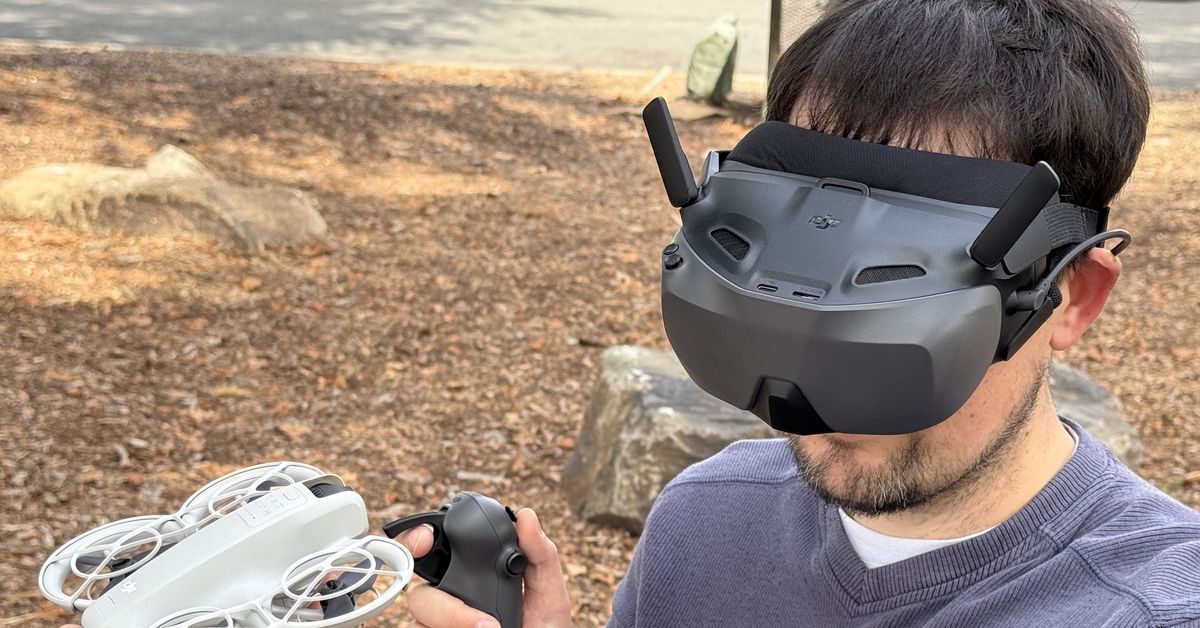
See, the company announced its budget $199 Neo drone in September that works with goggles, and today it’s announcing the $229 DJI Goggles N3. Add a $99 RC Motion 3 controller and you get airplane-like flight, with first-person video that puts you in the virtual cockpit.
But I can’t quite confirm that it’s worth your money yet — because DJI says my unit likely shipped with a defect, and I’ll need a little more testing time. More on that below.
At $229, the Goggles N3 are definitely less expensive than previous pairs, saving you $120 over the company’s $349 Goggles Integra, its previous budget set, and they’re less than half the price of the premium $499 DJI Goggles 3. Yet they’ve got the same one-tap defogging (using an internal fan) and DJI O4 video transmission as the Goggles 3. I flew the Neo just as far with the DJI’s cheapest and most expensive goggles before the signal cut out and the drone found its way home. You still get headtracking so you can look up and down while you’re flying forward, too.
On paper, the N3 even seem better than the more premium models in a couple ways: a wider 54-degree field of view (compare to 44 degrees), an eyebox so big you can put your prescription glasses inside, with no need to twist knobs to make the lenses match your vision, the company claims.
But instead of the crisp, colorful, perfect micro-OLED screens included in all of DJI’s other modern FPV goggles, the N3 has a single, comparatively washed-out LCD screen inside. To aim that panel at your face, there’s a big diagonal optic inside (not unlike a periscope) to bounce the light at a right angle.
In the case of my review unit, the center of my screen seems to be aimed at the center of my nosepiece. With no way to adjust the lenses, I’m stuck with an out-of-focus image all the time. Not being able to properly see anything has got to be a fluke, right? DJI spokesperson Daisy Kong tells me over the phone that I might have a defective unit.
If it is just a fluke, I’d be fine with most of the other corners DJI has cut. I could live with a slightly washed out image. I don’t miss the loss of the Goggles 3’s barely useful passthrough vision or silicone padding — fabric’s good enough for me. I don’t terribly mind that the Goggles N3 has a visible cable sticking out the side instead of weaving it into the headband like previous models.
While it’s heavier, it’s only 2.3 ounces (65g) heavier than the Goggles 3 according to my kitchen scale, and it’s still reasonably balanced out by the integrated battery at the back of the headset. Frankly, even the Goggles N3 has more wireless range and more fancy features than I typically need. But the core of the experience needs to be a crisp, clear look through the eye of the drone. I’ll let you know if that materializes in the next couple of weeks.
I should also note that the DJI Neo isn’t anywhere near as good as the Avata or Avata 2 at being an FPV drone, simply because of its weight and power ratios — it’s not as nimble as those more dedicated models, and the wind can more easily push it around.
Like them or not, DJI doesn’t have a lot of other affordable FPV options on the table. The company recently discontinued its $829 Avata Explorer Combo (though you can find some refurbished deals), and Kong says there are “no current plans” to let you use the $350 Goggles Integra with the DJI Neo, even though DJI now lets you use the Avata 2 and DJI Mini 4 Pro with the Integra. So if you don’t like the Goggles N3, the $500 Goggles 3 is the only other set that currently works with the Neo.
In the US, where DJI is facing some import difficulties, it’ll only sell the the Goggles N3 on its own, just as it only sells the DJI Neo on its own. In the UK and Europe, it’s a bundle to start: the new “DJI Neo Motion Fly More Combo” with drone, goggles, controller, three batteries, and a charging hub is available today for £449 or €529, with the standalone $229/£229/€269 Goggles N3 estimated to arrive in late November.
Technology
DJI unveils its cheapest-ever FPV goggles – and that makes the Neo way more affordable for immersive flying sessions
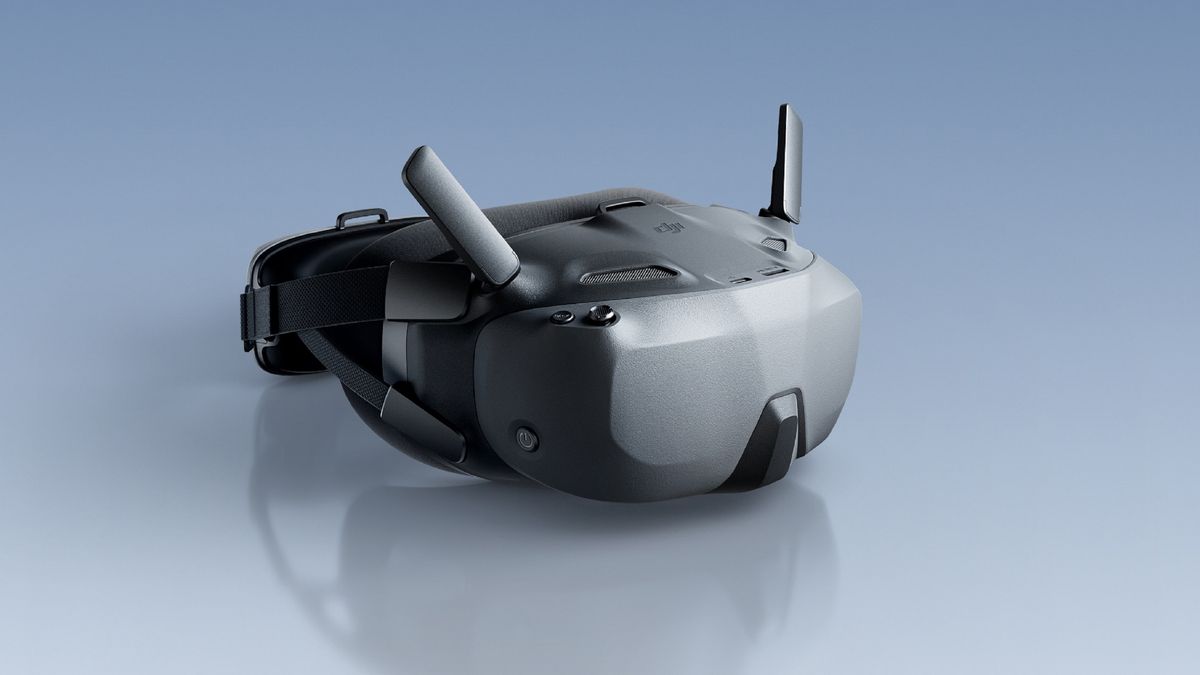
DJI has unveiled the new Goggles N3, its cheapest-ever FPV (First Person View) goggles for immersive drone flight. Coming in at under half the price of the Goggles 3, the cut-price N3 version looks like an excellent pairing with the Neo, DJI’s cheapest-ever 4K drone with multiple flight control options, including FPV.
DJI has set the price of the Goggles N3 at $229 / £229 / AU$359, plus the goggles can be purchased in a DJI Neo Motion Fly More Combo for $449 / £449 / AU$839. For context, that Fly More Combo, which includes the Neo selfie drone, RC Motion Controller 3 (rather than the FPV Remote Controller 3), two extra batteries and charging hub plus the Goggles N3, costs less than the Goggles 3 alone.
In this one move, DJI has provided an affordable route for FPV flight newbies, and a sensible alternative the BetaFPV Cetus X drone kit, further cementing the Neo’s position as one of the best drones for beginners.
FPV for novices
Serious FPV pilots are more likely to get that adrenaline hit from high-speed FPV flight using the DJI Avata 2 with Goggles 3, which currently costs from $999 at Amazon (US) or £798.95 at Amazon (UK) as a single battery Fly More Combo (with pricier bundles also available). For the rest of us, the new DJI Neo Motion Fly More Combo presents a watered-down and cost-effective entry to FPV flight.
That said, the Goggles N3 still look like a serious bit of gear (which are also compatible with the DJI Avata 2). With the Goggles N3 in position, a tilt of your head or flick of the wrist with the RC Motion 3 controller can perform aerial acrobatics such as 360-degree flips and rolls.
A full HD 1080p screen features with 54-degree field of view, immersing you in the drone’s perspective, while single-tap defogging activates fans to remove any condensation build-up to maintain crisp viewing. A headband with integrated battery for an even balance complete a comfortable fit, with enough space for glasses-wearers.
The Goggles N3 also feature the same antenna as the pricier Goggles 2, with DJI’s O4 video transmission providing a range up to 13km (how much you use of this range depends on the legal restrictions in your region), and a negligible latency of 31ms.
A neat augmented reality (AR) features allows you to adjust camera settings with the motion controller before your drone takes flight, or while it is hovering. And like DJI’s other goggles, the live feed can be shared to a connected smartphone, which can act as a secondary display for a spotter. You’ll get sessions of nearly three hours with the goggle’s battery fully charged.
All in all, the DJI Goggles N3 are a smart move by DJI, opening up FPV flight to a new market of novices that are curious about FPV flight, but unwilling to fork out for the pricier alternatives. The Neo is starting to make more sense.
You might also like
Science & Environment
Trump’s election victory sparks dismay among climate community

Republican presidential nominee, former U.S. President Donald Trump, listens to a question as he visits Chez What Furniture Store which was damaged during Hurricane Helene on September 30, 2024 in Valdosta, Georgia.
Michael M. Santiago | Getty Images News | Getty Images
Donald Trump’s election victory on Wednesday sparked a palpable sense of dismay among the climate community, with two key architects of the landmark Paris Agreement warning that the result will make it harder to slash planet-heating greenhouse gas emissions.
Trump will defeat his Democratic rival Kamala Harris and return to the White House for a second four-year term, according to an NBC News projection.
It marks a historic and somewhat improbable comeback for one of the most polarizing figures in modern American politics.
The 78-year-old, who has called the climate crisis “one of the great scams,” has pledged to ramp-up fossil fuel production, pare back outgoing President Joe Biden’s emissions-limiting regulations and pull the country out of the Paris climate accord — again.
The 2015 Paris Agreement is a critically important framework designed to reduce global greenhouse gas emissions. It aims to “limit global warming to well below 2, preferably to 1.5 degrees Celsius, compared to pre-industrial levels” over the long term.
Laurence Tubiana, a key architect of the Paris Agreement, said Trump’s election victory “is a setback for global climate action, but the Paris Agreement has proven resilient and is stronger than any single country’s policies.”
Tubiana, a French economist and diplomat who now serves as CEO of the European Climate Foundation, said the context today is “very different” to Trump’s first election victory in 2016.
French Economist Dr. Laurence Tubiana speaks during an event ‘G-20 Event: New Challenges in International Taxation’ at the annual meetings of the International Monetary Fund (IMF) and World Bank in Washington DC, United States on April 17, 2024.
Anadolu | Anadolu | Getty Images
“There is powerful economic momentum behind the global transition, which the US has led and gained from, but now risks forfeiting. The devastating toll of recent hurricanes was a grim reminder that all Americans are affected by worsening climate change,” Tubiana said.
“Responding to the demands of their citizens, cities and states across the US are taking bold action,” she added.
“Europe now has the responsibility and opportunity to step up and lead. By pushing forward with a fair and balanced transition, in close partnership with others, it can show that ambitious climate action protects people, strengthens economies, and builds resilience.”
‘An antidote to doom and despair’
Separately, Christiana Figueres, the former United Nations climate chief who oversaw the 2015 Paris summit, said the U.S. election result will be regarded as a “major blow to global climate action.”
However, Figueres said “it cannot and will not halt the changes underway to decarbonise the economy and meet the goals of the Paris Agreement.”
“Standing with oil and gas is the same as falling behind in a fast moving world,” she continued, predicting that clean energy technologies would continue to outcompete fossil fuels over the coming years.
Dame Christiana Figueres, Chair, The Earthshot Prize speaks at the Earthshot Prize Innovation Summit in partnership with Bloomberg Philanthropies on September 24, 2024 in New York City.
Bryan Bedder | Getty Images Entertainment | Getty Images
“Meanwhile, the vital work happening in communities everywhere to regenerate our planet and societies will continue, imbued with a new, even more determined spirit today,” Figueres said.
“Being here in South Africa for the Earthshot Prize makes clear that there is an antidote to doom and despair. It’s action on the ground, and it’s happening in all corners of the Earth.”
-

 Science & Environment2 months ago
Science & Environment2 months agoHow to unsnarl a tangle of threads, according to physics
-

 Technology1 month ago
Technology1 month agoIs sharing your smartphone PIN part of a healthy relationship?
-

 Science & Environment2 months ago
Science & Environment2 months agoHyperelastic gel is one of the stretchiest materials known to science
-

 Science & Environment2 months ago
Science & Environment2 months ago‘Running of the bulls’ festival crowds move like charged particles
-

 Technology2 months ago
Technology2 months agoWould-be reality TV contestants ‘not looking real’
-

 Science & Environment1 month ago
Science & Environment1 month agoX-rays reveal half-billion-year-old insect ancestor
-

 Science & Environment2 months ago
Science & Environment2 months agoMaxwell’s demon charges quantum batteries inside of a quantum computer
-

 Money1 month ago
Money1 month agoWetherspoons issues update on closures – see the full list of five still at risk and 26 gone for good
-

 Science & Environment2 months ago
Science & Environment2 months agoSunlight-trapping device can generate temperatures over 1000°C
-

 Sport1 month ago
Sport1 month agoAaron Ramsdale: Southampton goalkeeper left Arsenal for more game time
-

 Science & Environment2 months ago
Science & Environment2 months agoPhysicists have worked out how to melt any material
-

 Technology1 month ago
Technology1 month agoGmail gets redesigned summary cards with more data & features
-

 Football1 month ago
Football1 month agoRangers & Celtic ready for first SWPL derby showdown
-

 MMA1 month ago
MMA1 month ago‘Dirt decision’: Conor McGregor, pros react to Jose Aldo’s razor-thin loss at UFC 307
-

 Technology1 month ago
Technology1 month agoUkraine is using AI to manage the removal of Russian landmines
-

 News1 month ago
News1 month agoWoman who died of cancer ‘was misdiagnosed on phone call with GP’
-

 Science & Environment2 months ago
Science & Environment2 months agoLaser helps turn an electron into a coil of mass and charge
-

 Sport1 month ago
Sport1 month agoBoxing: World champion Nick Ball set for Liverpool homecoming against Ronny Rios
-

 Technology1 month ago
Technology1 month agoEpic Games CEO Tim Sweeney renews blast at ‘gatekeeper’ platform owners
-
Business1 month ago
how UniCredit built its Commerzbank stake
-

 Science & Environment2 months ago
Science & Environment2 months agoA new kind of experiment at the Large Hadron Collider could unravel quantum reality
-

 Science & Environment2 months ago
Science & Environment2 months agoLiquid crystals could improve quantum communication devices
-

 Technology1 month ago
Technology1 month agoRussia is building ground-based kamikaze robots out of old hoverboards
-

 News1 month ago
News1 month ago‘Blacks for Trump’ and Pennsylvania progressives play for undecided voters
-

 Technology1 month ago
Technology1 month agoSamsung Passkeys will work with Samsung’s smart home devices
-

 MMA1 month ago
MMA1 month agoDana White’s Contender Series 74 recap, analysis, winner grades
-

 Science & Environment2 months ago
Science & Environment2 months agoQuantum ‘supersolid’ matter stirred using magnets
-

 Science & Environment2 months ago
Science & Environment2 months agoWhy this is a golden age for life to thrive across the universe
-

 Technology1 month ago
Technology1 month agoMicrosoft just dropped Drasi, and it could change how we handle big data
-

 News1 month ago
News1 month agoNavigating the News Void: Opportunities for Revitalization
-

 MMA1 month ago
MMA1 month ago‘Uncrowned queen’ Kayla Harrison tastes blood, wants UFC title run
-

 Sport1 month ago
Sport1 month ago2024 ICC Women’s T20 World Cup: Pakistan beat Sri Lanka
-

 Entertainment1 month ago
Entertainment1 month agoBruce Springsteen endorses Harris, calls Trump “most dangerous candidate for president in my lifetime”
-

 MMA1 month ago
MMA1 month agoPereira vs. Rountree prediction: Champ chases legend status
-

 News1 month ago
News1 month agoMassive blasts in Beirut after renewed Israeli air strikes
-

 Technology1 month ago
Technology1 month agoCheck, Remote, and Gusto discuss the future of work at Disrupt 2024
-

 News1 month ago
News1 month agoRwanda restricts funeral sizes following outbreak
-

 TV1 month ago
TV1 month agoসারাদেশে দিনব্যাপী বৃষ্টির পূর্বাভাস; সমুদ্রবন্দরে ৩ নম্বর সংকেত | Weather Today | Jamuna TV
-

 Technology1 month ago
Technology1 month agoWhy Machines Learn: A clever primer makes sense of what makes AI possible
-

 Science & Environment2 months ago
Science & Environment2 months agoQuantum forces used to automatically assemble tiny device
-

 Technology1 month ago
Technology1 month agoMicrophone made of atom-thick graphene could be used in smartphones
-
Business1 month ago
Top shale boss says US ‘unusually vulnerable’ to Middle East oil shock
-

 Business1 month ago
Business1 month agoWater companies ‘failing to address customers’ concerns’
-

 News1 month ago
News1 month agoCornell is about to deport a student over Palestine activism
-

 Business1 month ago
Business1 month agoWhen to tip and when not to tip
-

 Sport1 month ago
Sport1 month agoWXV1: Canada 21-8 Ireland – Hosts make it two wins from two
-

 News1 month ago
News1 month agoHull KR 10-8 Warrington Wolves – Robins reach first Super League Grand Final
-

 MMA1 month ago
MMA1 month agoKayla Harrison gets involved in nasty war of words with Julianna Pena and Ketlen Vieira
-

 Science & Environment2 months ago
Science & Environment2 months agoITER: Is the world’s biggest fusion experiment dead after new delay to 2035?
-

 News2 months ago
News2 months ago▶️ Hamas in the West Bank: Rising Support and Deadly Attacks You Might Not Know About
-

 Technology2 months ago
Technology2 months agoMeta has a major opportunity to win the AI hardware race
-

 Science & Environment2 months ago
Science & Environment2 months agoA slight curve helps rocks make the biggest splash
-

 Science & Environment2 months ago
Science & Environment2 months agoNuclear fusion experiment overcomes two key operating hurdles
-

 Technology1 month ago
Technology1 month agoSingleStore’s BryteFlow acquisition targets data integration
-

 Football1 month ago
Football1 month ago'Rangers outclassed and outplayed as Hearts stop rot'
-

 Sport1 month ago
Sport1 month agoChina Open: Carlos Alcaraz recovers to beat Jannik Sinner in dramatic final
-

 Football1 month ago
Football1 month agoWhy does Prince William support Aston Villa?
-

 Technology1 month ago
Technology1 month agoLG C4 OLED smart TVs hit record-low prices ahead of Prime Day
-

 News1 month ago
News1 month ago▶ Hamas Spent $1B on Tunnels Instead of Investing in a Future for Gaza’s People
-

 Sport1 month ago
Sport1 month agoShanghai Masters: Jannik Sinner and Carlos Alcaraz win openers
-

 Technology1 month ago
Technology1 month agoMusk faces SEC questions over X takeover
-

 MMA1 month ago
MMA1 month agoPennington vs. Peña pick: Can ex-champ recapture title?
-

 Sport1 month ago
Sport1 month agoPremiership Women’s Rugby: Exeter Chiefs boss unhappy with WXV clash
-

 Sport1 month ago
Sport1 month agoCoco Gauff stages superb comeback to reach China Open final
-

 Womens Workouts1 month ago
Womens Workouts1 month ago3 Day Full Body Women’s Dumbbell Only Workout
-

 Technology1 month ago
Technology1 month agoUniversity examiners fail to spot ChatGPT answers in real-world test
-
Business1 month ago
Bank of England warns of ‘future stress’ from hedge fund bets against US Treasuries
-

 Sport1 month ago
Sport1 month agoSturm Graz: How Austrians ended Red Bull’s title dominance
-

 MMA1 month ago
MMA1 month ago‘I was fighting on automatic pilot’ at UFC 306
-

 News1 month ago
News1 month agoGerman Car Company Declares Bankruptcy – 200 Employees Lose Their Jobs
-

 Sport1 month ago
Sport1 month agoWales fall to second loss of WXV against Italy
-

 Science & Environment2 months ago
Science & Environment2 months agoTime travel sci-fi novel is a rip-roaringly good thought experiment
-

 Science & Environment2 months ago
Science & Environment2 months agoNerve fibres in the brain could generate quantum entanglement
-
Business1 month ago
DoJ accuses Donald Trump of ‘private criminal effort’ to overturn 2020 election
-
Business1 month ago
Sterling slides after Bailey says BoE could be ‘a bit more aggressive’ on rates
-

 TV1 month ago
TV1 month agoTV Patrol Express September 26, 2024
-

 Money4 weeks ago
Money4 weeks agoTiny clue on edge of £1 coin that makes it worth 2500 times its face value – do you have one lurking in your change?
-

 Technology1 month ago
Technology1 month agoAmazon’s Ring just doubled the price of its alarm monitoring service for grandfathered customers
-
Travel1 month ago
World of Hyatt welcomes iconic lifestyle brand in latest partnership
-

 Technology1 month ago
Technology1 month agoQuoroom acquires Investory to scale up its capital-raising platform for startups
-

 MMA1 month ago
MMA1 month agoKetlen Vieira vs. Kayla Harrison pick, start time, odds: UFC 307
-

 Technology1 month ago
Technology1 month agoThe best shows on Max (formerly HBO Max) right now
-

 Technology1 month ago
Technology1 month agoIf you’ve ever considered smart glasses, this Amazon deal is for you
-

 Sport1 month ago
Sport1 month agoURC: Munster 23-0 Ospreys – hosts enjoy second win of season
-

 MMA1 month ago
MMA1 month agoHow to watch Salt Lake City title fights, lineup, odds, more
-

 Technology1 month ago
Technology1 month agoJ.B. Hunt and UP.Labs launch venture lab to build logistics startups
-
Business1 month ago
Italy seeks to raise more windfall taxes from companies
-
Business1 month ago
‘Let’s be more normal’ — and rival Tory strategies
-
Business1 month ago
The search for Japan’s ‘lost’ art
-

 Sport1 month ago
Sport1 month agoNew Zealand v England in WXV: Black Ferns not ‘invincible’ before game
-

 Sport1 month ago
Sport1 month agoMan City ask for Premier League season to be DELAYED as Pep Guardiola escalates fixture pile-up row
-

 News2 months ago
News2 months ago▶️ Media Bias: How They Spin Attack on Hezbollah and Ignore the Reality
-

 Science & Environment2 months ago
Science & Environment2 months agoHow to wrap your mind around the real multiverse
-

 MMA1 month ago
MMA1 month agoUFC 307’s Ketlen Vieira says Kayla Harrison ‘has not proven herself’
-

 News1 month ago
News1 month agoTrump returns to Pennsylvania for rally at site of assassination attempt
-

 MMA1 month ago
MMA1 month agoKevin Holland suffers injury vs. Roman Dolidze
-

 Technology4 weeks ago
Technology4 weeks agoThe FBI secretly created an Ethereum token to investigate crypto fraud
-

 Business1 month ago
Business1 month agoStocks Tumble in Japan After Party’s Election of New Prime Minister
-

 Technology1 month ago
Technology1 month agoTexas is suing TikTok for allegedly violating its new child privacy law
-

 Technology1 month ago
Technology1 month agoOpenAI secured more billions, but there’s still capital left for other startups

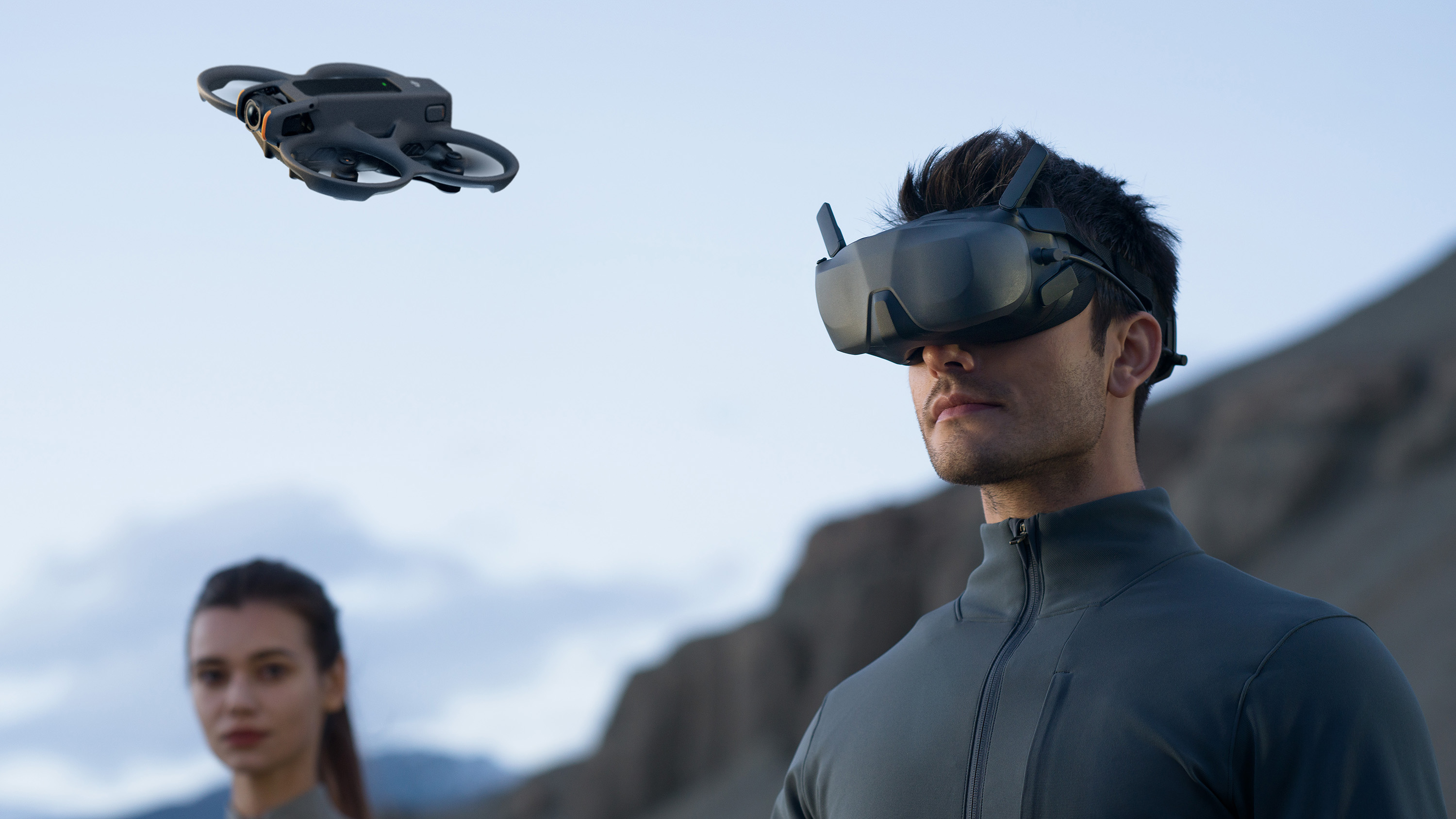
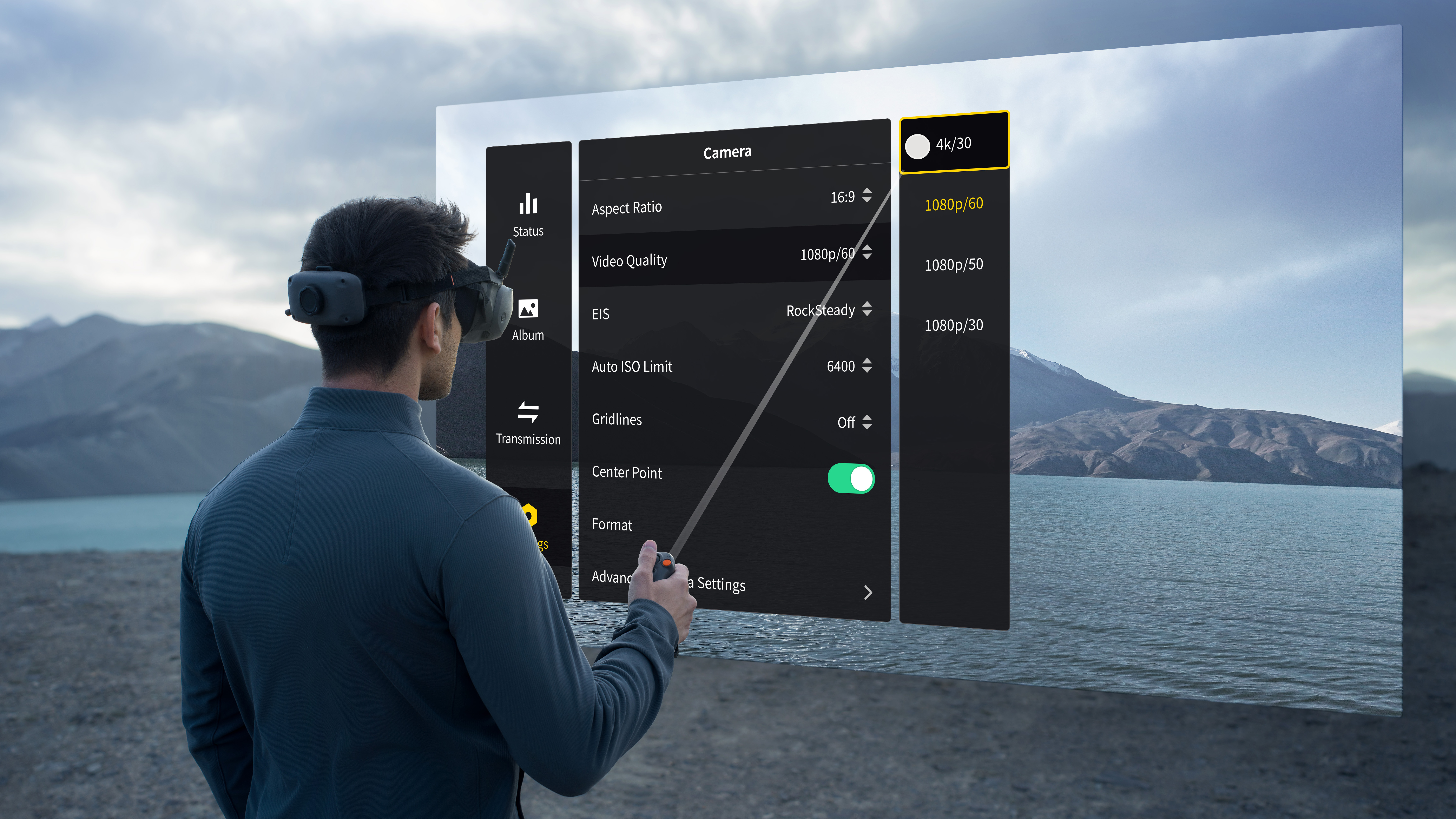
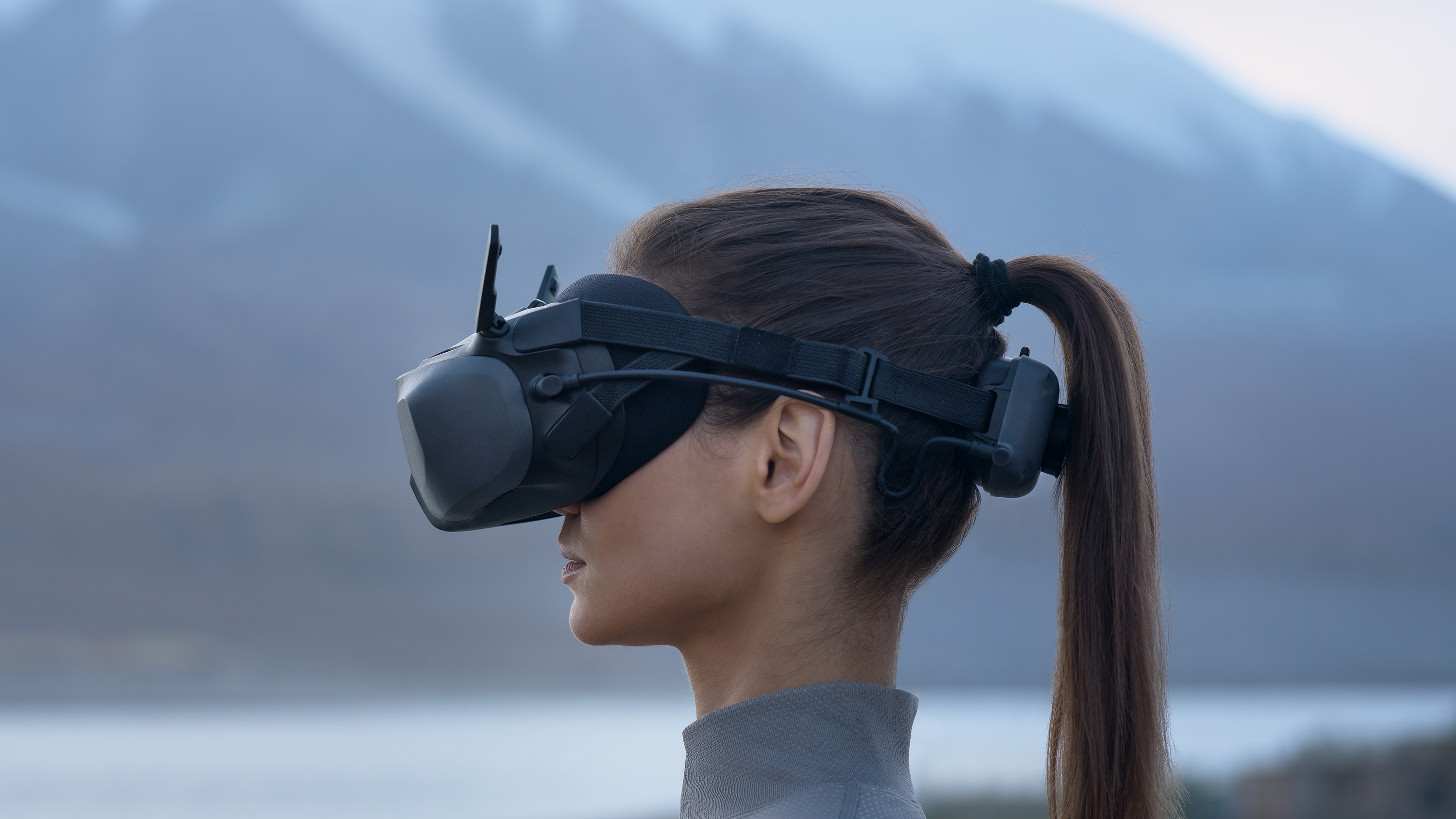
You must be logged in to post a comment Login